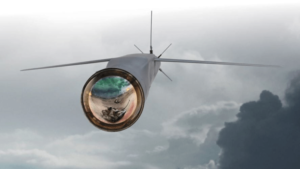China’s Navy recently announced its intention to develop a fourth aircraft carrier, signaling a significant stride in its bid to challenge the United States’ naval dominance in the western Pacific.
In a report posted by South China Morning Post last March 6, Admiral Yuan Huazhi of the People’s Liberation Army (PLA) Navy disclosed the plans during an annual legislative meeting in Beijing, emphasizing the carrier’s role in national defense.
The Dragon Sets Sail: China’s Bold Naval Leap
In the grand chessboard of global power plays, China’s latest move – announcing its fourth aircraft carrier – is a bold stride toward tipping the scales of naval might in the western Pacific.
This play came straight from the mouth of Admiral Yuan Huazhi at a legislative meeting in Beijing, where the brass and suits gather to chart the course of the nation’s destiny.
Admiral Yuan made it clear that the construction of this behemoth was on track, slicing through technical waters without a hitch.
He even dangled the prospect of this new leviathan being nuclear-powered, a feature that, until now, has been the exclusive bragging rights of Uncle Sam and the French.
Nuclear power isn’t just about going green; it’s about the muscle to stay at sea longer, pushing farther without bowing to the tyranny of fuel.
Yuan didn’t mince words about the mission behind this massive hunk of steel and sophistication: defending China’s turf and sovereignty.
“We are building aircraft carriers to protect our national sovereignty and to protect our territorial integrity,” the Chinese Admiral said, as quoted by the South China Morning Post.
It’s a statement as old as time but with a modern twist of maritime muscle.
Glimpse into Ambitious Expansion Plans
Peeks of what’s brewing at Shanghai’s Jiangnan shipyard have been sneaking out online, painting a picture of China’s ambitions to flex its naval capabilities on the world stage.
Hot on the heels of this reveal was the launch of the Fujian, China’s third carrier and a testament to its growing appetite for advanced warfighting toys.
While the Fujian skimps on nuclear propulsion, it’s no slouch, sporting high-tech gear like electromagnetic catapults for launching a broader array of aircraft.
But let’s not pop the champagne just yet.
The Fujian is still getting its sea legs, waiting to cut through the ocean on trials. This dance of shipbuilding and modernization is China’s play to morph from a nearshore nuisance to a “blue-water” behemoth capable of throwing punches far from home.
Transition to Deep-Water Dominance
Despite this push, China is still playing catch-up to Uncle Sam’s Navy’s global reach and dominance.
Yet, the ambition is clear: to stand toe-to-toe with the US in the open seas, especially in the simmering pot of the Indo-Pacific.
The script doesn’t end with carriers.
China’s beefing up its naval game across the board – surface ships, subs, you name it – and diving deep into the tech that’ll make these tools more lethal.
Think stealth, drones, and all that jazz.
Plus, they’re not just building a navy; they’re crafting a network of overseas bases and maritime silk roads to keep their interests fueled and secure.
But this buildup isn’t just about parades and power projection.
It’s rattling sabers in contested waters, especially in the South China Sea, where China’s claims and ambitions are causing more than a few sleepless nights for its neighbors and Uncle Sam.
Navigating Troubled Waters in the Pacific
The plot thickens as China’s naval shadow grows over the Indo-Pacific.
The unveiling of the fourth carrier isn’t just a milestone; it’s a signal flare in the ongoing tussle for dominance in waters that are key to global stability and power.
In essence, China’s latest naval adventure is more than just metal and ambition hitting the high seas. It’s a chess move in the grand game of global power, with the potential to shift the balance in a region that’s as volatile as it is vital.
The stage is set, and the world is watching how this play unfolds, with the ripples sure to touch shores far beyond the Pacific’s horizon.



